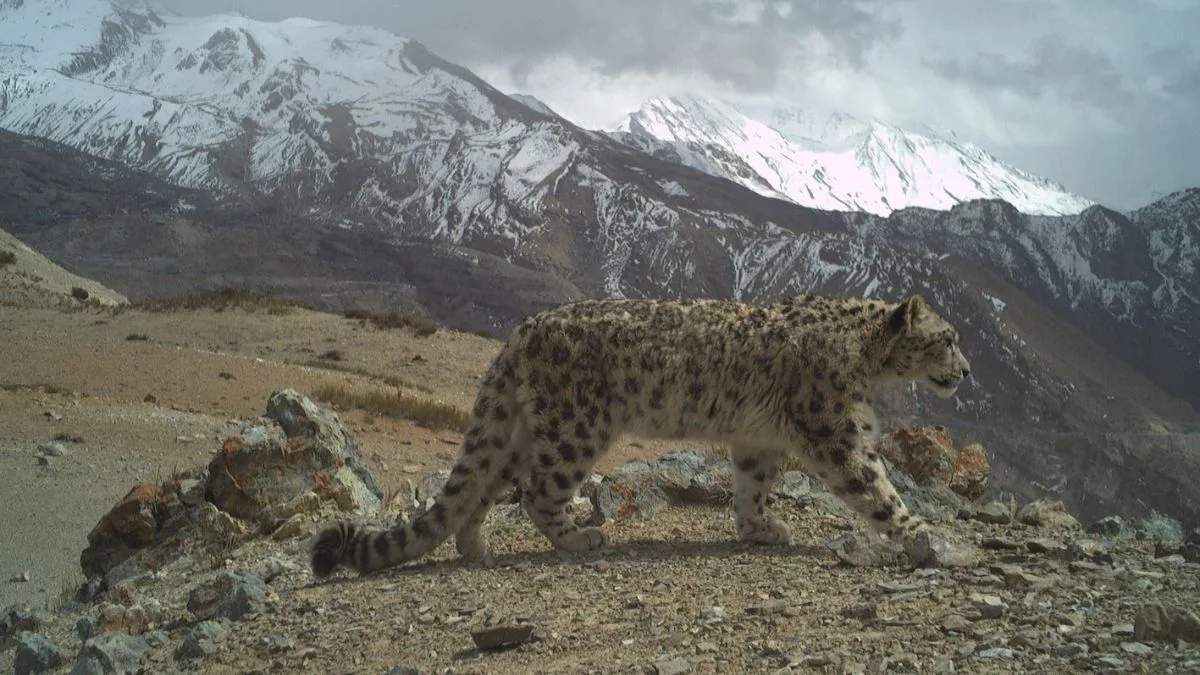SHIMLA – The second state-wide snow leopard population assessment conducted by the Himachal Pradesh Forest Department’s Wildlife Wing has estimated 83 snow leopards across the state’s high-altitude regions, confirming a stable and thriving population of this elusive species.
The highest densities were recorded in the trans-Himalayan regions of Spiti and Pin Valley, followed by Upper Kinnaur and Tabo.
The survey, carried out by the Nature Conservation Foundation (NCF) in partnership with the Wildlife Wing and supported by the Snow Leopard Trust (SLT) and Royal Enfield Social Mission, is the first of its kind in India to be completed within a single year.
It underscores Himachal Pradesh’s leadership in snow leopard research and conservation.
Using large-scale camera trapping across six representative sites covering nearly 26,000 sq km of snow leopard habitat, researchers identified 44 unique adult snow leopards—the same number as recorded in the 2021 survey. These individuals were photographed 262 times, leading to an estimated total population of 83 snow leopards, excluding cubs. Population density was found to range between 0.16 and 0.53 individuals per 100 sq km, with the trans-Himalayan regions showing the densest populations.
Chief Wildlife Warden Amitabh Gautam said the Wildlife Wing, in collaboration with NCF, is taking continuous steps to protect endangered species.
“Snow leopards in Himachal are under threat, and the department is playing a key role in their conservation. Many wild species are facing extinction, and we are taking important measures to safeguard them,” he said.
The scientific methods used in the study followed the Snow Leopard Population Assessment of India (SPAI) protocol, developed by the Ministry of Environment, Forest and Climate Change (MoEFCC), and aligned with global standards under the Global Snow Leopard Ecosystem Protection Program (GSLEP).
The two-step process involved habitat stratification through occupancy surveys followed by camera trapping in selected zones. Refinements in this second survey reduced bias and improved accuracy, completing the study in just one year compared to three years previously, creating a scalable, cost-effective model for long-term monitoring.
GSLEP Executive Director Dr. Koustubh Sharma said that Himachal Pradesh has transitioned from PAWS (Population Assessment of the World’s Snow Leopards) to CLAWS (Continuous Long-term Assessment of the World’s Snow Leopards).
“As an apex predator, the snow leopard reflects the health of its ecosystem. Continuous monitoring is essential to detect and address emerging threats,” he said.
Preeti Bhandari, Chief Conservator of Forests (Wildlife), said, “Completing this survey in just one year shows our improved capacity for large-scale monitoring and the growing trust between the department and local communities.”

